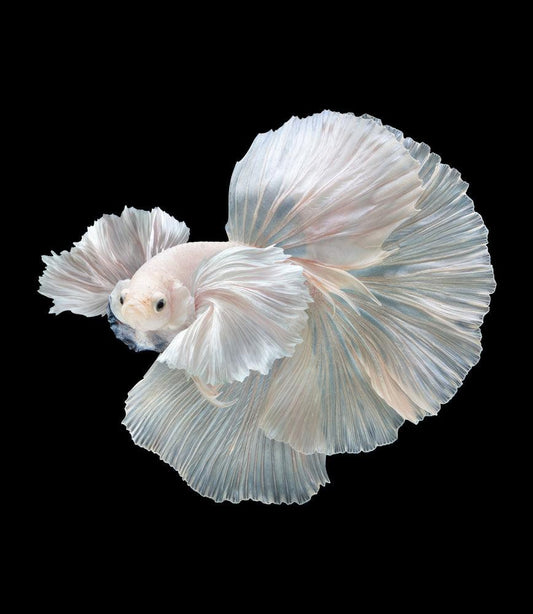How to Present Betta Fish to an Area Container Safely
How to Present Betta Fish to an Area Container Safely
Blog Article
How to Breed Betta Fish Efficiently: Professional Techniques and Insights for Hobbyists Aiming To Broaden Their Betta Collection
Reproducing Betta fish needs a nuanced understanding of genetics and ecological conditions, making it crucial for enthusiasts to come close to the procedure with both diligence and treatment. Producing an optimal breeding setting, choosing the right sets, and observing the details of their courtship behaviors are foundational actions that can dramatically impact the end result. The succeeding care of the fry is important for guaranteeing their healthy advancement. As we discover these essential parts, it becomes clear that successful reproduction is not nearly the initial pairing however incorporates a broader technique that qualities careful consideration.
Recognizing Betta Fish Genes
Understanding the genes of Betta fish is critical for effective reproduction, as it influences characteristics such as color, fin form, and actions. Betta fish display a diverse array of shades and patterns, greatly established by their hereditary makeup.
Along with pigmentation, fin morphology is one more significant aspect of Betta genes (betta fish). The sizes and shape of fins are affected by different genetics, consisting of those that determine whether the fins are short, long, or veil-shaped. Recognizing these genetic variations aids breeders predict the phenotypic end results of their children
Furthermore, behavior traits such as aggression and territoriality can additionally be influenced by genetics. These behaviors play an essential function in the breeding procedure, as they can affect generating success and the overall personality of the resulting fry. By thoroughly recognizing these genetic concepts, breeders can make enlightened decisions, inevitably improving their reproduction programs and accomplishing preferable results.
Preparing the Reproduction Environment
Developing an optimal breeding atmosphere is essential for the successful reproduction of Betta fish. The very first action in preparing this environment is to choose an ideal breeding tank, ideally varying from 5 to 10 gallons.
Following, take into consideration using a sponge filter or an air stone to offer mild water blood circulation without developing strong currents that can worry the fish. It is necessary to install plants or breeding cones to provide hiding areas and advertise convenience for the woman throughout the spawning procedure. Drifting plants, such as Java moss or water sprite, can additionally develop a more natural environment while assisting in bubble nest structure by the man.
Prior to presenting the reproducing pairs, make sure the water is conditioned and without unsafe chemicals, such as chlorine or hefty steels. betta fish. Normal water adjustments must be conducted to keep optimal water quality, improving the chances of successful breeding. With these preparations in place, the reproducing setting will certainly support the health and wellness and well-being of both Betta fish
Selecting Reproduction Pairs
Picking the appropriate reproduction pairs is essential for achieving successful Betta fish recreation. When picking your reproduction pairs, consider several vital variables consisting of health, temperament, and genes. Healthy Betta fish exhibit vivid colors, clear eyes, and active behavior. Selecting fish that are devoid of disease ensures a better chance of generating feasible offspring.
Temperament is one more important factor to consider, as Betta fish are known for their hostile nature. It is a good idea to select a male and lady that display suitable characters to decrease tension throughout the breeding procedure. A calm male can motivate a smoother courtship, while a lady that is as well hostile may interrupt the procedure.
Genetic history also plays a considerable duty in the quality of the children. Reproducing fish that are genetically varied can decrease the threat of genetic health concerns and improve the total vigor of the fry. It is beneficial to research the lineage of both the man and female, concentrating on preferable attributes such as fin type, color scheme, and dimension.
The Reproduction Process
The breeding process of Betta fish calls for mindful planning and focus to detail to make sure an effective end result. It is essential to prepare an ideal reproduction storage tank, ideally a 5-10 gallon aquarium with a temperature preserved at 78-80 ° F. The storage tank needs to be equipped with a heater, filter (preferably sponge type to avoid strong currents), and lots of aquatic plants for the female to conceal.
As soon as the setting is established, present the picked reproducing set to the container, permitting them to acclimate. Observe their behavior; the man will certainly present elaborate courtship rituals, including flaring his fins and building a bubble nest. If the female shows passion, she will certainly present vertical stripes suggesting readiness for spawning.
When the female is receptive, the pair will engage in a mating welcome, throughout which the male feeds the eggs. Preserving optimum pop over here water conditions during this duration is crucial for the advancement of healthy Betta fry.
Taking Care Of Betta Fry

Feeding Betta fry is essential, Discover More as they call for a diet plan high in healthy protein. Initially, they can be fed infusoria or liquid fry food, transitioning to finely crushed high-grade pellets as they expand. Feed tiny sections numerous times a day to urge healthy growth without overloading the storage tank with uneaten food.
:strip_icc()/siamese-fighting-fish-bettas-1378308-hero-f459084da1414308accde7e21001906c.jpg)
As they mature, check their growth carefully and separate any type of aggressive people to stop injury. By supplying a supporting atmosphere and appropriate nutrition, enthusiasts can successfully increase Betta fry right into dynamic, healthy and balanced fish, ultimately boosting their breeding ventures.
Verdict
Successful Betta fish reproduction requires careful focus to genetic option, environmental problems, and look after the fry. By recognizing the genetics of Betta fish and preparing a suitable reproduction environment, hobbyists can improve the opportunities of producing lively, healthy and balanced offspring. Choosing suitable reproduction pairs and carefully monitoring the courtship and generating processes are necessary. Ultimately, offering ideal treatment for his explanation the fry guarantees their healthy development, contributing to a growing Betta collection.
Report this page